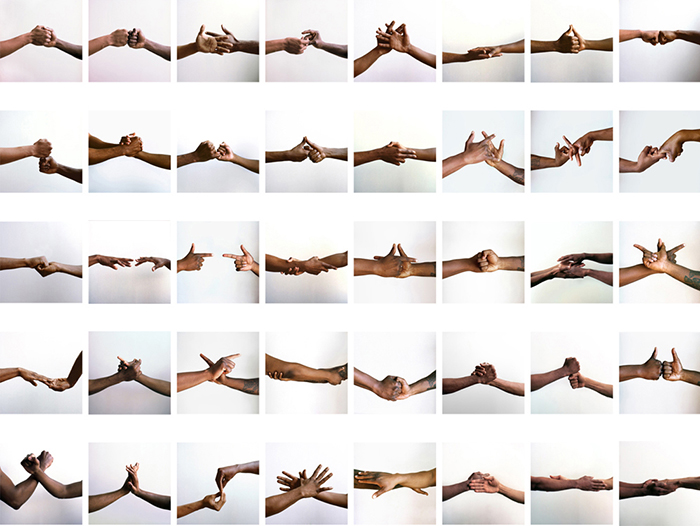Historically, the dap is both a symbol among African American men that expresses unity, strength, defiance, or resistance and a complex language for communicating information. The dap and the black power handshake, which evolved from the dap, were important symbols of black consciousness, identity, and cultural unity throughout black America.
The dap originated during the late 1960s among black G.I.s stationed in the Pacific during the Vietnam War. At a time when the Black Power movement was burgeoning, racial unrest was prominent in American cities, and draft reforms sent tens of thousands of young African Americans into combat, the dap became an important symbol of unity and survival in a racially turbulent atmosphere. Scholars on the Vietnam War and black Vietnam vets alike note that the dap derived from a pact black soldiers took in order to convey their commitment to looking after one another. Several unfortunate cases of black soldiers reportedly being shot by white soldiers during combat served as the impetus behind this physical act of solidarity.
Such events, combined with the racism and segregation faced by black G.I.s, created a pressing need for an act and symbol of unity. The dap, an acronym for “dignity and pride” whose movements translate to “I’m not above you, you’re not above me, we’re side by side, we’re together,” provided just this symbol of solidarity and served as a substitute for the Black Power salute prohibited by the military.
White soldiers and commanding officers deemed the handshake a threat under the misconception that the dap was a coded language of potential black insurrection. In fact the dap was also a coded form of communication between soldiers that conveyed necessary information for survival, such as what to expect at the battlefront or what had transpired during an operation. The dap was banned at all levels of the military, and thus many black soldiers were court-martialed, jailed, and even dishonorably discharged as a punishment for dapping. Military repression of the dap further cemented a desire for a symbol of solidarity and protection among black men.
Conversely, later in the war, the military saw the utility of using the dap in medical treatment of black combatants with post-traumatic stress disorder, creating a program of “dap therapy.” The military would bring in black G.I.s fluent in the dap to dap with these men to build their trust up to accept treatment from white doctors and staff.
In 2013, I began a series of photographs called Five on the Black Hand Side that image African American men performing the dap. I make these through identifying particular communities of men of different cultures and ages who participate in the culture of the dap, interviewing them, and photographing their handshakes. Through the research I have already conducted with these individuals, I have learned that there is a tremendous diversity of daps, evolving from the dramatically different movements and meanings of each military company.
At the Smithsonian, I have been researching oral and visual histories of the “Bloods” (black soldiers) of Vietnam, who coined the term “dap,” at the Soul Soldiers exhibition archives curated by Samuel L. Black of the Heinz History Center, the National Museum of African American History and Culture, and the Center for Folklife and Cultural Heritage. I have been using the Smithsonian’s archives at the African Art Museum, the Hirshhorn, and the National Museum of American History to look for the evolution of the dap in songs, artwork, films, literature, and posters to understand how it and other gestures of black solidarity disseminated in popular culture. I will continue to interview black Vietnam veterans, former gang members, and others and photograph their handshakes to construct further images for Five on the Black Hand Side.
LaMont Hamilton is a photographer and visual artist from Chicago who is conducting research at the Center for Folklife and Cultural Heritage through the Smithsonian Artist Research Fellowship program.
Related Posts:
• The Will to Adorn and the Optics of Identity
• Owning Identity: Sartorial Expressions at the Million Man March Anniversary
• Continuity, Change, and Cultural Connections: African Diaspora at the Folklife Festival


